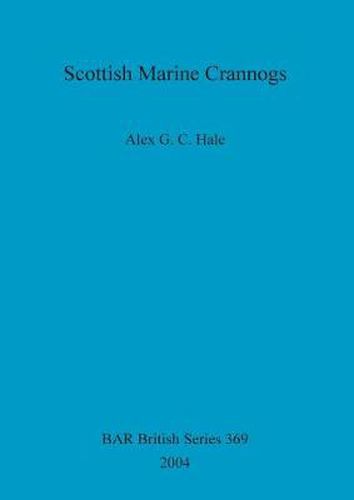Readings Newsletter
Become a Readings Member to make your shopping experience even easier.
Sign in or sign up for free!
You’re not far away from qualifying for FREE standard shipping within Australia
You’ve qualified for FREE standard shipping within Australia
The cart is loading…






This title is printed to order. This book may have been self-published. If so, we cannot guarantee the quality of the content. In the main most books will have gone through the editing process however some may not. We therefore suggest that you be aware of this before ordering this book. If in doubt check either the author or publisher’s details as we are unable to accept any returns unless they are faulty. Please contact us if you have any questions.
Scottish crannogs are situated in wetland lacustrine or marine environments. While the so called lake dwellings situated in freshwater environments have been the focus of considerable, and growing, attention, those sites located in marine environments, especially Scottish firths, remain the poor relation and, as yet, have not been the subject of detailed analysis. In some ways this is surprising given the potential importance of firths as prehistoric transport routes. Such sites along firths may have acted as nodal points in postulated networks of coastal transport, exchange and trade. The paucity of research may in part therefore be explained by the relative rarity of marine crannogs and the apparent difficulties of researching on sites in the intertidal zone. This book sets out to examine the archaeological potential and palaeoenvironmental significance of the remains of marine crannogs in Scotland. Three key areas of marine crannog research were identified from the framework of this volume. The first was to record main site distribution, location and environmental change. The second objective was to assess the position of marine crannogs within the contemporary landscape and to evaluate how they relate to other sites in their regions. This has the result of integrating these sites into the archaeological landscape so that evidence of their function, from structural and artefactual evidence, may contribute to the reconstruction of past societies. The third broad aim of this work was to ascertain whether reliable dating evidence might be acquired from marine crannogs. Evidence is produced that is used to place the sites into their contemporary landscapes and the chronological framework of past societies.
$9.00 standard shipping within Australia
FREE standard shipping within Australia for orders over $100.00
Express & International shipping calculated at checkout
This title is printed to order. This book may have been self-published. If so, we cannot guarantee the quality of the content. In the main most books will have gone through the editing process however some may not. We therefore suggest that you be aware of this before ordering this book. If in doubt check either the author or publisher’s details as we are unable to accept any returns unless they are faulty. Please contact us if you have any questions.
Scottish crannogs are situated in wetland lacustrine or marine environments. While the so called lake dwellings situated in freshwater environments have been the focus of considerable, and growing, attention, those sites located in marine environments, especially Scottish firths, remain the poor relation and, as yet, have not been the subject of detailed analysis. In some ways this is surprising given the potential importance of firths as prehistoric transport routes. Such sites along firths may have acted as nodal points in postulated networks of coastal transport, exchange and trade. The paucity of research may in part therefore be explained by the relative rarity of marine crannogs and the apparent difficulties of researching on sites in the intertidal zone. This book sets out to examine the archaeological potential and palaeoenvironmental significance of the remains of marine crannogs in Scotland. Three key areas of marine crannog research were identified from the framework of this volume. The first was to record main site distribution, location and environmental change. The second objective was to assess the position of marine crannogs within the contemporary landscape and to evaluate how they relate to other sites in their regions. This has the result of integrating these sites into the archaeological landscape so that evidence of their function, from structural and artefactual evidence, may contribute to the reconstruction of past societies. The third broad aim of this work was to ascertain whether reliable dating evidence might be acquired from marine crannogs. Evidence is produced that is used to place the sites into their contemporary landscapes and the chronological framework of past societies.